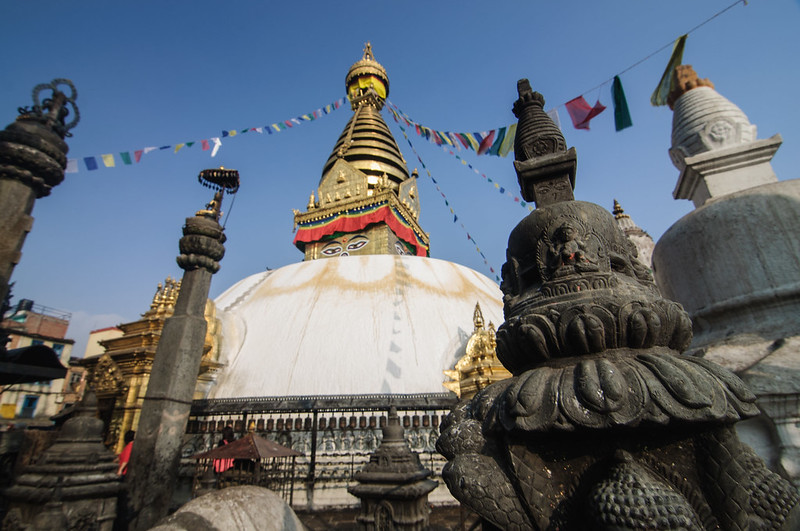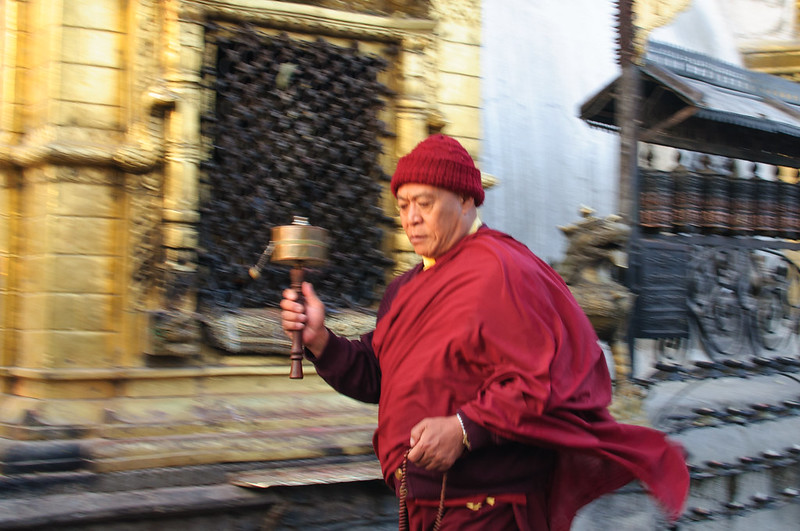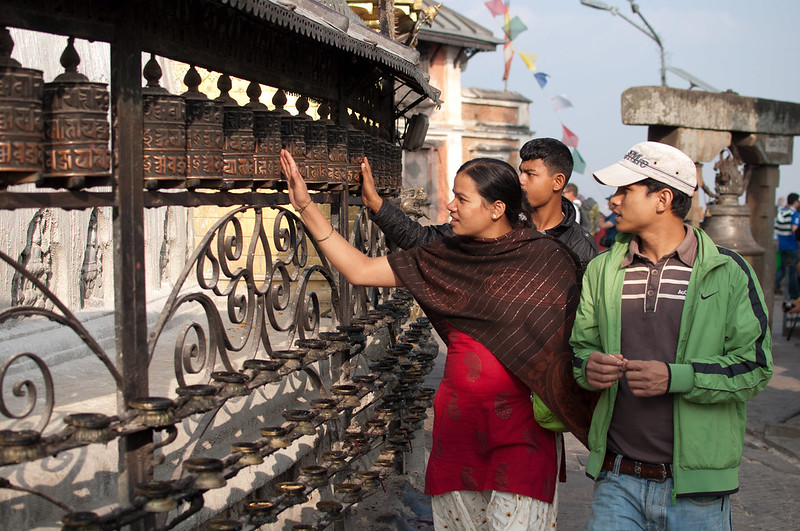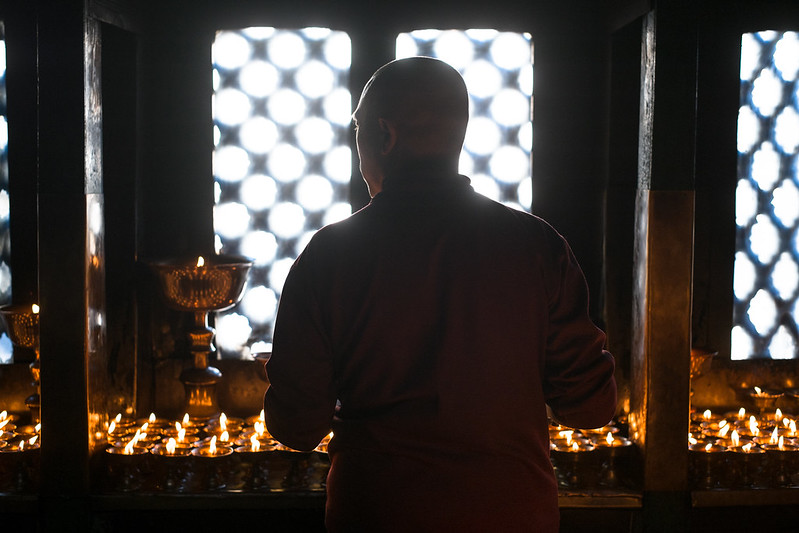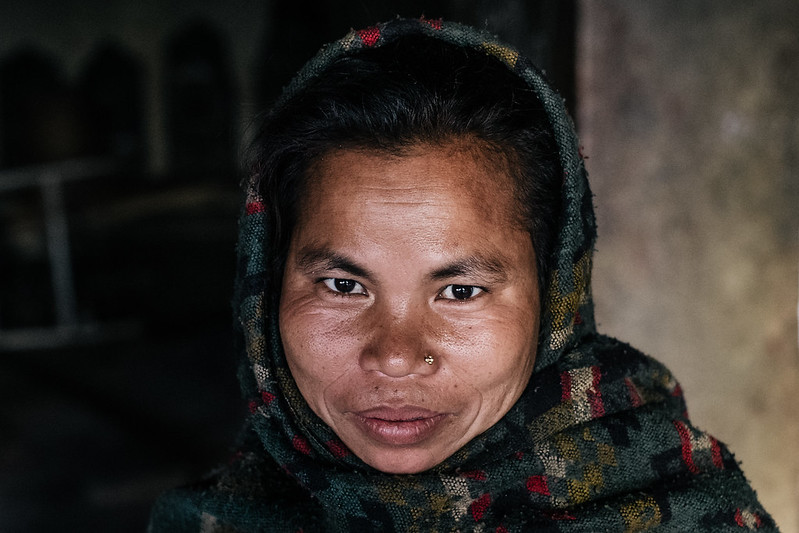Blog Archives
Travel Photography | Destination: Nepal | Swayambhunath Stupa (The Monkey Temple), Kathmandu
Swayambhunath, is among the oldest religious sites in Nepal. The complex consists of a stupa, a variety of shrines and temples. Swayambhunath is also known as the Monkey Temple as there are holy monkeys living in the north-west parts of the temple. From Thamel, it cost about Rs400 one way with tiny taxi ride. When you ride this kind of taxi, please don’t expect they will use the main road. When we use the taxi back in 2012, I felt like I was playing game which we run away from getting caught and there is an urgency to use your skills to go back side of the building passing local market, shops, residence area, temple, shops, and another temple and then the driver said, “Sir, this is Swayambhunath Stupa”.
“I think we were scammed, there is no temple here”. But thats before we see a staircase leading to the temple. The entrance is Rs200 per person.

Steps to Swayambhunath Temple, the point where you have to buy the conservation ticket & take your long breath. You don’t want to know how far is it from the bottom
I found this quote to express the experience climbing these steps:
“We were breathless and sweating as we stumbled up the last steep steps and practically fell upon the biggest vajra (thunder-bolt scepter) that I have ever seen.” – Allione, Women Of Wisdom.
Well this is true enough, one of our member even vomiting just about 5 minutes after reaching to the top.
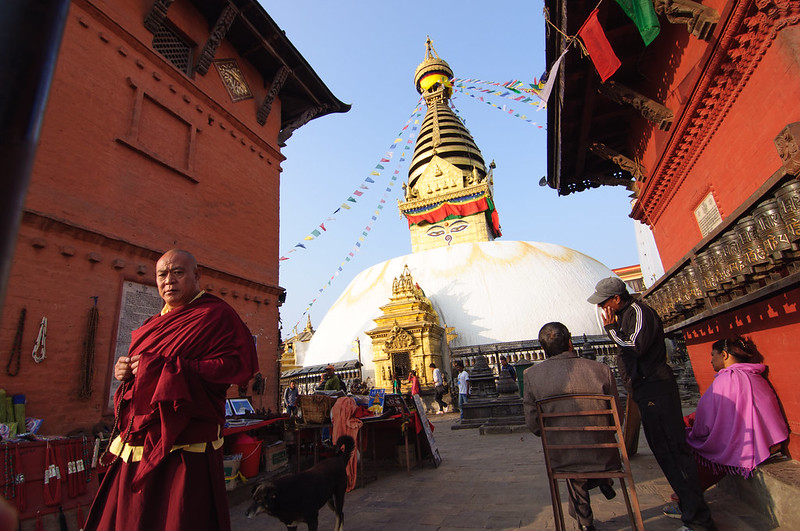
For the Buddhist Newars in whose mythological history and origin myth as well as day-to-day religious practice, Swayambhunath occupies a central position, it is probably the most sacred among Buddhist pilgrimage sites. For Tibetans and followers of Tibetan Buddhism, it is second only to Boudhanath.

Each morning before dawn hundreds of Buddhist (Vajrayana) and Hindu pilgrims ascend the 365 steps from eastern side that lead up the hill
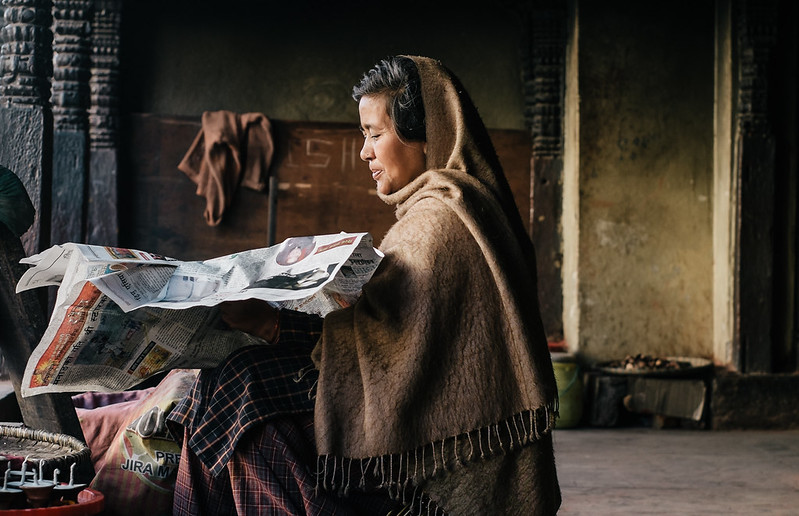
A women lost in her own world reading newspaper, neglecting people passing by or even being photographed
These set of images was taken during my first visit in 2012 and my recent 2014.
Thank you for your time viewing this post.
Related Post:
-
Tashi Palkhiel – Tibetan Refugee Camp at Pokhara (Portrait Series)
-
Travel Photography With Fujifilm X-Pro1 | Destination: Nepal | Boudhanath Stupa
-
Travel Photography With Fujifilm X-Pro1 | Destination : Nepal | Doors of Nepal
Travel Photography With Fujifilm X-Pro1 | Destination : Nepal | Doors of Nepal
This post is simply about collection of doors that attracts my interest during our recent travel photography trip. They came with various characteristic. Some with stricking colors, while other with seasoned feature. It can be just a simple doors like what we can see in our hometown. Doors with padlock are common in Nepal especially when visiting Bhaktapur & Patan.
I haven’t done any research about the doors role against local community here in Nepal but I suspect it must be related to Buddhism practice. The way they paint the doors with striking colors, amazingly detailed hand carved woods tells us how important the doors are related into their life. Only the windows and doors are mainly painted or decorated while the other part of the house or building left seasoned.
From photographic viewpoint, it is very easy to photograph the doors or windows. There is no need to deal with people so you don’t think about your life and death of asking people to photograph them. You can do it even with your phone’s camera. No special technique and if you like me, no need to carry any lighting equipment to get this done. Often time when travelling, I will pack as minimal as I could so that I don’t clutter my mind of taking care of my gears in my bag while moving around. The less the better.
These are my collection : Doors of Nepal
“We keep moving forward, opening new doors, and doing new things, because we’re curious and curiosity keeps leading us down new paths.”
-Walt Disney-
Travel Photography With Fujifilm X-Pro1 | Destination: Nepal | Boudhanath Stupa
If you happened in Kathmandu and you have nothing in your plan for that day, I will suggest a visit to Boudhanath Stupa. The largest stupa in Nepal, ranked no. 3 interesting places to visit in Kathmandu written in Lonely Planet Travel Guide Book.
Located about 7km of east of the downtown Kathmandu, if you from Thamel, Kathmandu’s tourist spot, it cost you about Rs350 (in 2012) per way with a small, cramped sized taxi. It took about 15-20 minutes to reach here. Entrance fees applied at the gate with the cost of Rs150 per person.
Boudhanath is both an eye of calm within capital’s dusty pandemonium and a sancutary of Tibetan Buddhist culture amid a nation dominated by Nepal Hindus. Throughout its narrow streets, you can see posters of smiling Dalai Lama, Tibetan folk-medicine stores, traditional artisans’ workshops, and restaurants. It has been announced as World Heritage Site by UNESCO since 1979. Buddhists walk around the sacred monuments clockwise, the same direction a prayer wheel spins. The monasteries near the stupa have become a global centre of Tibetan Buddhism.
If you planned to make a visit, I suggest to go here arround 3-5pm. If you come earlier, the you will have all the time for visit all the shops inside, of have a cup of coffee or two at one of the roof top cafe surrounding the big stupa. I’m suggesting to visit at that time so that we are can target for the sunset and the blue hour. Well I don’t really mean that sunset but to have Boudhanath with nice golden layer at the edge of the horizon. During blue hour, when they started to lid the prayer candles and put it around the stupa is something not to be missed too. I didn’t manage to wait until all prayer candles fully completed arranged around the stupa, but for now, that will be in my “must-have” list on my next visit.
Boudhanath Stupa, Kathmandu
It was Day 9 of our amazing journey at Nepal. We leave Syafru Bensi early in the morning and reach back at Kathmandu around 2pm. After we had our lunch, we decided to go to Boudhanath Stupa as suggested by Wazari Wazir.
“Boudhanath (Devnagari: बौद्धनाथ) (also called Boudha, Bouddhanath or Baudhanath or the Khāsa Caitya) is one of the holiest Buddhist sites in Kathmandu(Yambu), Nepal. It is known as Khāsti in Nepal Bhasa Jyarung Khasyor in Tamang language or as Bauddha by modern speakers of Nepali.[1] Located about 11 km (6.8 mi) from the center and northeastern outskirts of Kathmandu, the stupa’s massive mandala makes it one of the largest spherical stupas in Nepal.[2]
The Buddhist stupa of Boudhanath dominates the skyline. The ancient Stupa is one of the largest in the world. The influx of large populations of refugees from Tibet has seen the construction of over 50 Tibetan Gompas (Monasteries) around Boudhanath. As of 1979, Boudhanath is a UNESCO World Heritage Site. Along with Swayambhunath, it is one of the most popular tourist sites in the Kathmandu area.
The Stupa is on the ancient trade route from Tibet which enters the Kathmandu Valley by the village of Sankhu in the northeast corner, passes by Boudnath Stupa to the ancient and smaller stupa of Cā-bahī (often called ‘Little Boudnath’). It then turns directly south, heading over the Bagmati river to Patan – thus bypassing the main city of Kathmandu (which was a later foundation).[1] Tibetan merchants have rested and offered prayers here for many centuries. When refugees entered Nepal from Tibet in the 1950s, many decided to live around Bouddhanath. The Stupa is said to entomb the remains of Kassapa Buddha.” – Wikipedia
“To Travel Is To Discover That Everyone Is Wrong About Other Countries” – Aldous Huxley
